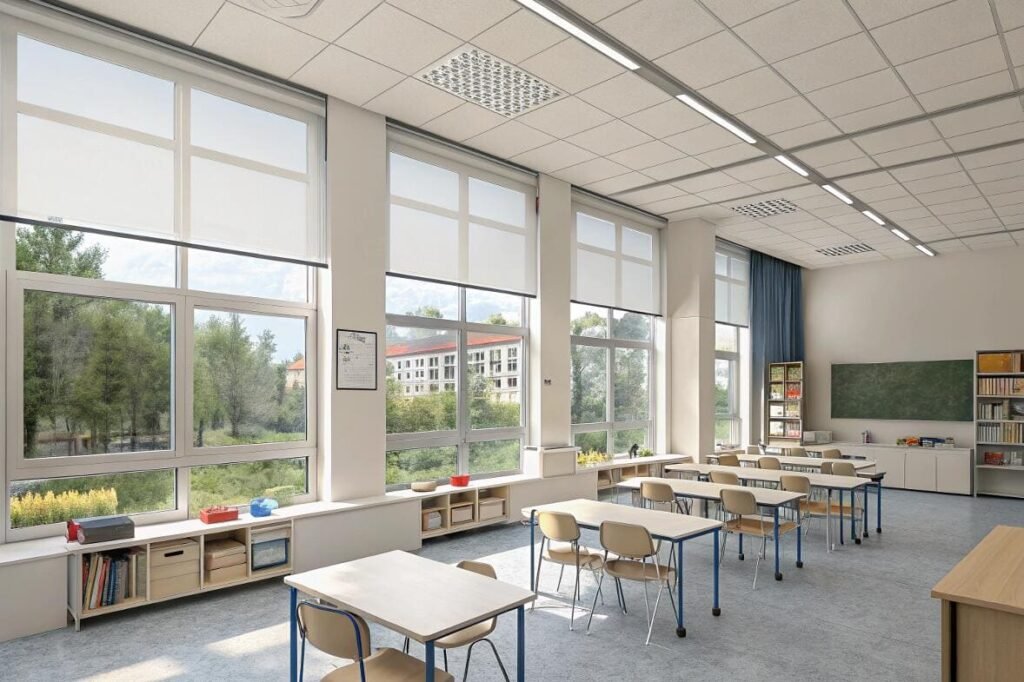After managing hundreds of commercial blind installations, I've seen projects where proper maintenance doubled the lifespan while neglect led to costly premature replacements.
Professional maintenance contracts for commercial blinds typically cost 5-15% of initial installation value annually but can extend blind lifespan by 3-5 years and prevent costly emergency repairs. The value depends on blind complexity, facility usage, and internal maintenance capabilities rather than a universal recommendation.
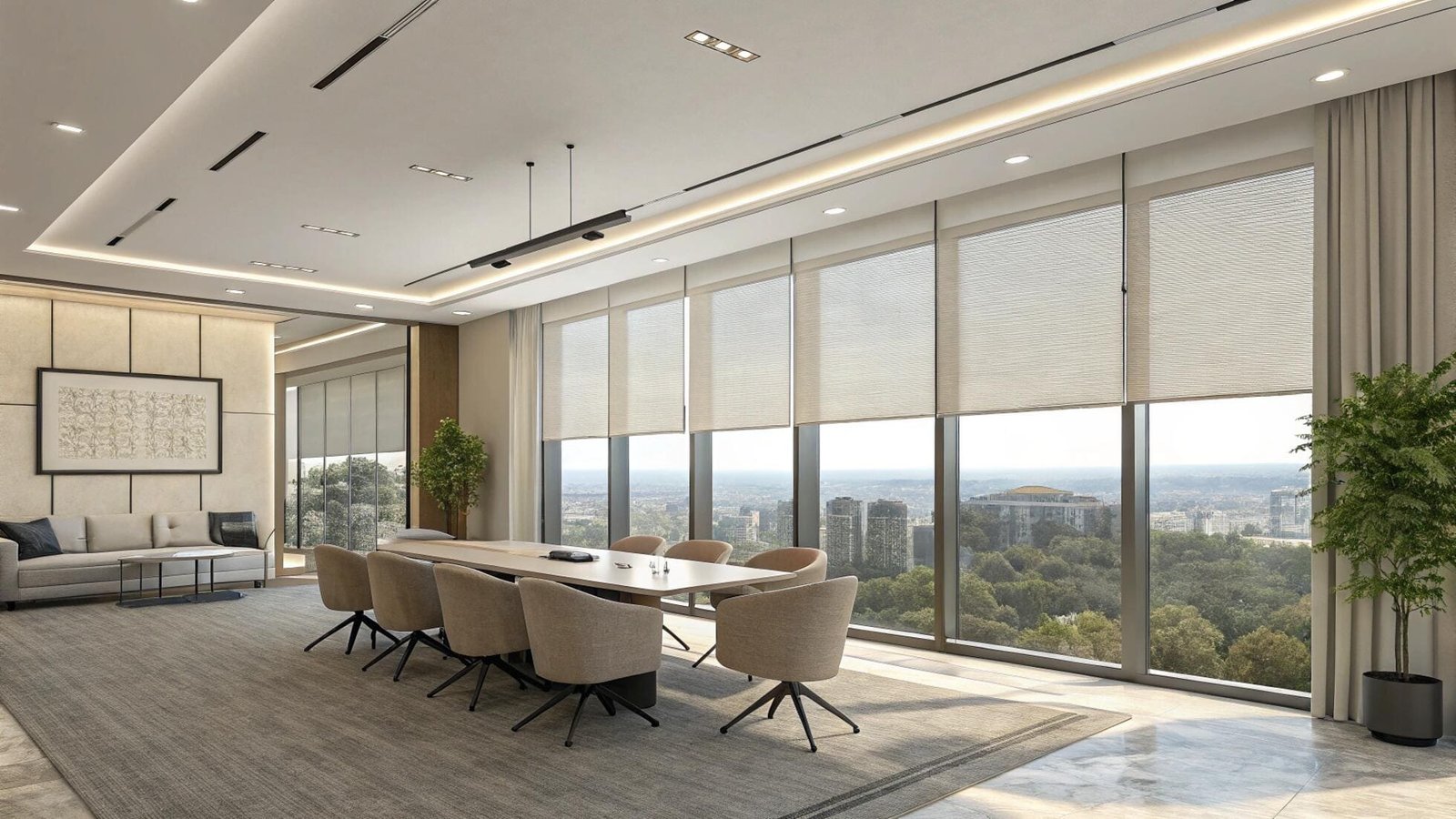
The decision between DIY maintenance and professional contracts affects not just costs but operational reliability, warranty compliance, and long-term asset value. Understanding these implications helps make informed decisions that balance budget constraints with performance expectations.
What is the lifespan of blinds?
Blind lifespan varies dramatically based on material quality, usage intensity, environmental conditions, and maintenance practices, making it essential to understand realistic expectations for different applications.
Commercial blinds typically last 7-15 years with proper maintenance, while residential blinds can last 10-20 years. High-quality materials like aluminum venetian blinds or premium fabrics extend lifespan significantly, while budget options may require replacement in 3-5 years under heavy commercial use.
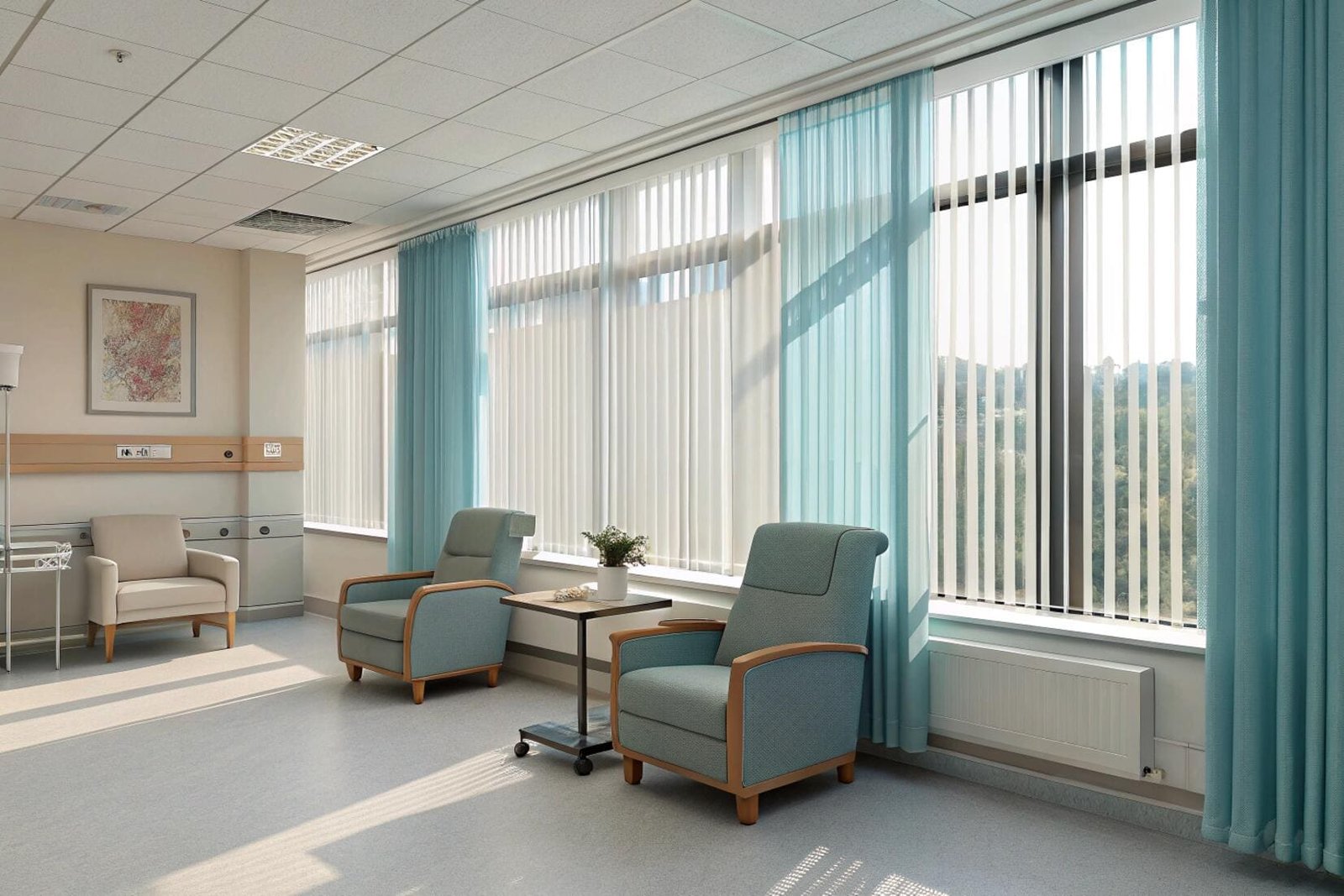
Material construction fundamentally determines baseline durability expectations. Aluminum venetian blinds with quality hardware can function reliably for 15-20 years in office environments, while fabric-based options face more variable lifespans depending on UV exposure, humidity, and cleaning frequency. The mechanical components[^1], including lift cords, tilt mechanisms, and mounting hardware, often determine replacement timing more than fabric or slat condition.
Environmental factors significantly impact blind longevity across different applications. Commercial spaces with high traffic, frequent operation, and exposure to cooking vapors or industrial processes accelerate wear patterns. Residential applications typically experience gentler conditions but may face prolonged UV exposure or humidity challenges that affect material integrity over time.
Lifespan Expectations by Blind Type:
| Blind Type | Residential Lifespan | Commercial Lifespan | Key Limiting Factors |
|---|---|---|---|
| Aluminum Venetian | 15-20 years | 10-15 years | Tilt mechanism wear |
| Fabric Roller | 10-15 years | 7-12 years | Fabric degradation, UV damage |
| Cellular/Honeycomb | 12-18 years | 8-15 years | Fabric tears, cord wear |
| Wood Blinds | 15-25 years | 10-18 years | Moisture damage, warping |
| Motorized Systems | 8-15 years | 6-12 years | Motor failure, electronic components |
Usage patterns create predictable wear trajectories that affect replacement planning. Blinds operated multiple times daily experience significantly faster mechanical wear than those adjusted seasonally. Commercial environments with automated schedules may actually extend lifespan through consistent, controlled operation compared to irregular manual adjustment that can stress components.
Quality tier selection at initial purchase determines long-term value outcomes more than maintenance practices alone. Premium blinds with superior hardware, reinforced mounting systems, and durable materials justify higher initial costs through extended service life and reduced maintenance requirements. Budget options may appear cost-effective initially but often require earlier replacement that negates savings.
How do you maintain blinds?
Proper blind maintenance involves systematic cleaning procedures[^2], mechanical component care, and preventive measures that preserve both appearance and functionality throughout the service life.
Effective blind maintenance includes weekly dusting, monthly deep cleaning with appropriate solutions, quarterly hardware inspection, and annual professional servicing for motorized or complex systems. Different blind types require specific cleaning methods and frequencies to prevent damage while maintaining optimal performance.
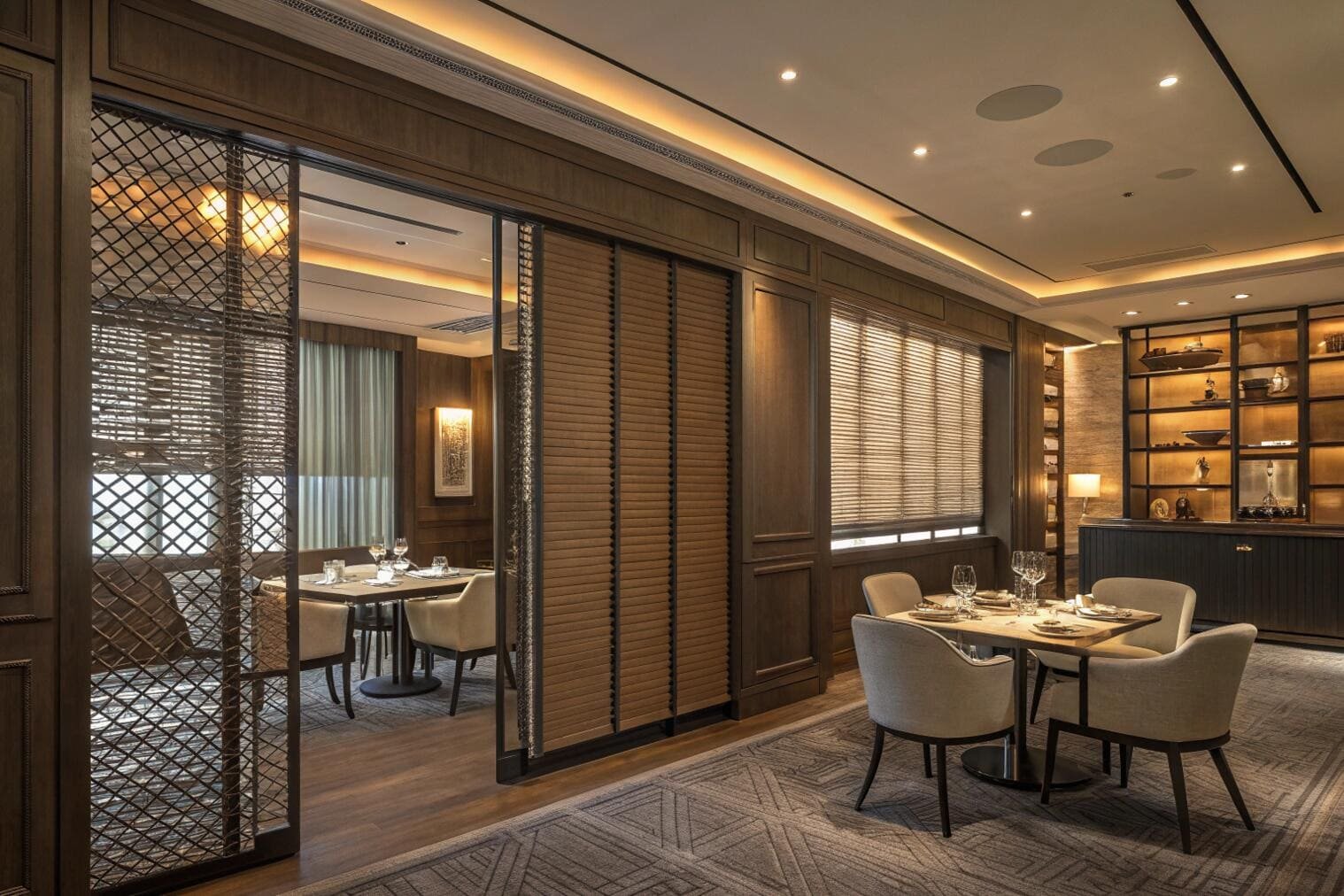
Regular dusting prevents accumulation that can damage fabrics, clog mechanisms, and create aesthetic issues. Microfiber cloths or vacuum brush attachments work effectively for most blind types, while compressed air helps clear debris from venetian blind slats and cellular blind pockets. The frequency depends on environmental conditions, with high-dust environments requiring more frequent attention.
Deep cleaning procedures[^2] vary significantly between blind types and require careful technique selection to avoid damage. Fabric blinds may need spot cleaning with mild detergents, while aluminum venetian blinds can tolerate more aggressive cleaning solutions. Understanding material limitations prevents inadvertent damage during maintenance procedures.
Maintenance Schedule by Blind Type:
| Maintenance Task | Roller Blinds | Venetian Blinds | Cellular Blinds | Motorized Systems |
|---|---|---|---|---|
| Weekly Dusting | Light vacuum | Slat-by-slat cleaning | Gentle brush | Motor housing cleaning |
| Monthly Deep Clean | Spot cleaning | Ultrasonic or manual wash | Professional recommended | Control system check |
| Quarterly Inspection | Fabric condition | Tilt mechanism | Cord integrity | Motor calibration |
| Annual Service | Basic check | Hardware lubrication | Professional service | Full system diagnostic |
Mechanical component maintenance requires attention to moving parts, mounting hardware, and control systems that enable proper operation. Lubrication of tilt mechanisms, inspection of lift cords, and verification of mounting security prevent failures that could damage blinds or create safety hazards. Motorized systems require additional attention to electrical connections, motor housing, and control programming.
Documentation of maintenance activities helps track performance patterns, identify recurring issues, and plan replacement timing. Maintenance logs capture cleaning dates, component replacements, and performance observations that inform future maintenance decisions and warranty claims when applicable.
What blinds are low maintenance?
Low-maintenance blind options minimize cleaning requirements, reduce mechanical complexity, and resist common failure modes that require frequent attention or professional service.
Roller blinds with synthetic fabrics offer the lowest maintenance requirements due to their simple mechanism, easy cleaning, and durable construction. Aluminum venetian blinds rank second for low maintenance, while cellular blinds and motorized systems[^3] require more frequent attention due to complex structures and moving parts.
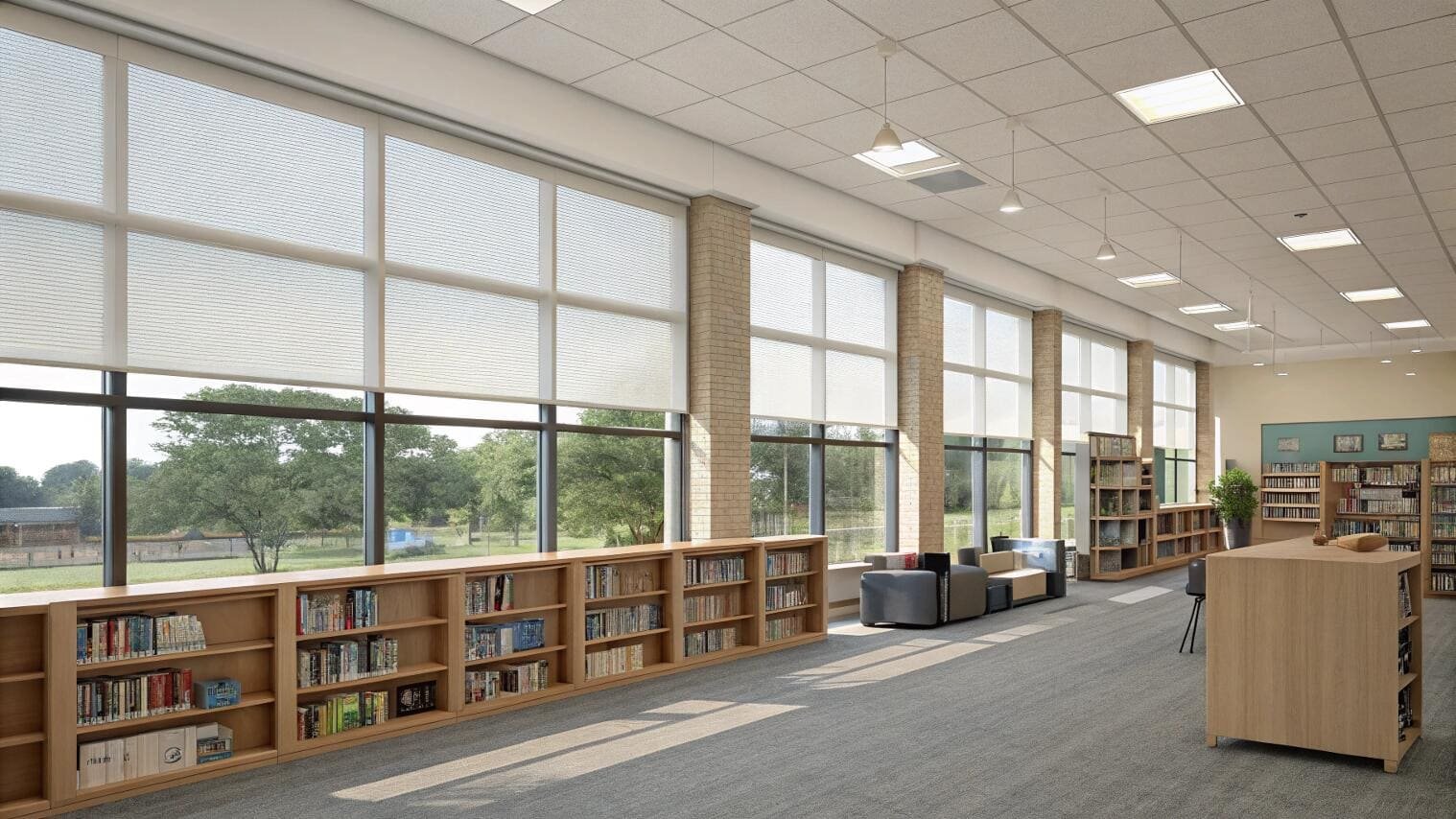
Material selection drives maintenance requirements more than blind style in most applications. Synthetic fabrics resist staining, fading, and moisture damage while cleaning easily with standard procedures. Natural materials like wood require more careful maintenance to prevent warping, cracking, or finish deterioration that affects both appearance and function.
Mechanism simplicity directly correlates with maintenance ease and long-term reliability. Roller blinds with basic spring or chain mechanisms require minimal ongoing attention compared to venetian blinds with multiple moving parts. Motorized systems add electronic complexity that increases both maintenance requirements and potential failure modes.
Low-Maintenance Ranking by Blind Type:
| Ranking | Blind Type | Maintenance Level | Key Advantages |
|---|---|---|---|
| 1 | Synthetic Roller | Minimal | Simple mechanism, easy cleaning |
| 2 | Aluminum Venetian | Low | Durable materials, washable |
| 3 | PVC Vertical | Low-Medium | Moisture resistant, replaceable slats |
| 4 | Wood Venetian | Medium | Natural beauty but requires care |
| 5 | Cellular/Honeycomb | Medium-High | Complex structure, fabric care |
| 6 | Motorized Systems | High | Electronic components, calibration needs |
Environmental resistance affects maintenance frequency significantly across different applications. Blinds installed in kitchens, bathrooms, or industrial environments face accelerated soiling and potential damage that increases maintenance requirements regardless of basic design simplicity. Selecting appropriate materials for specific environments reduces long-term maintenance burden.
Installation quality impacts ongoing maintenance requirements through proper mounting, adjustment, and initial setup. Professional installation ensures optimal operation that minimizes wear patterns and reduces premature maintenance needs. Poor installation creates ongoing issues that increase maintenance costs and reduce blind lifespan[^4] substantially.
Which type of blinds last the longest?
Blind longevity depends on material durability, mechanism robustness, and environmental suitability, with clear performance leaders emerging across different application categories.
Aluminum venetian blinds typically offer the longest service life in commercial applications due to their durable materials and robust mechanisms, lasting 15-20 years with proper maintenance. Wood blinds can exceed 20 years in residential settings, while high-quality cellular blinds provide 12-18 years of reliable service with appropriate care.
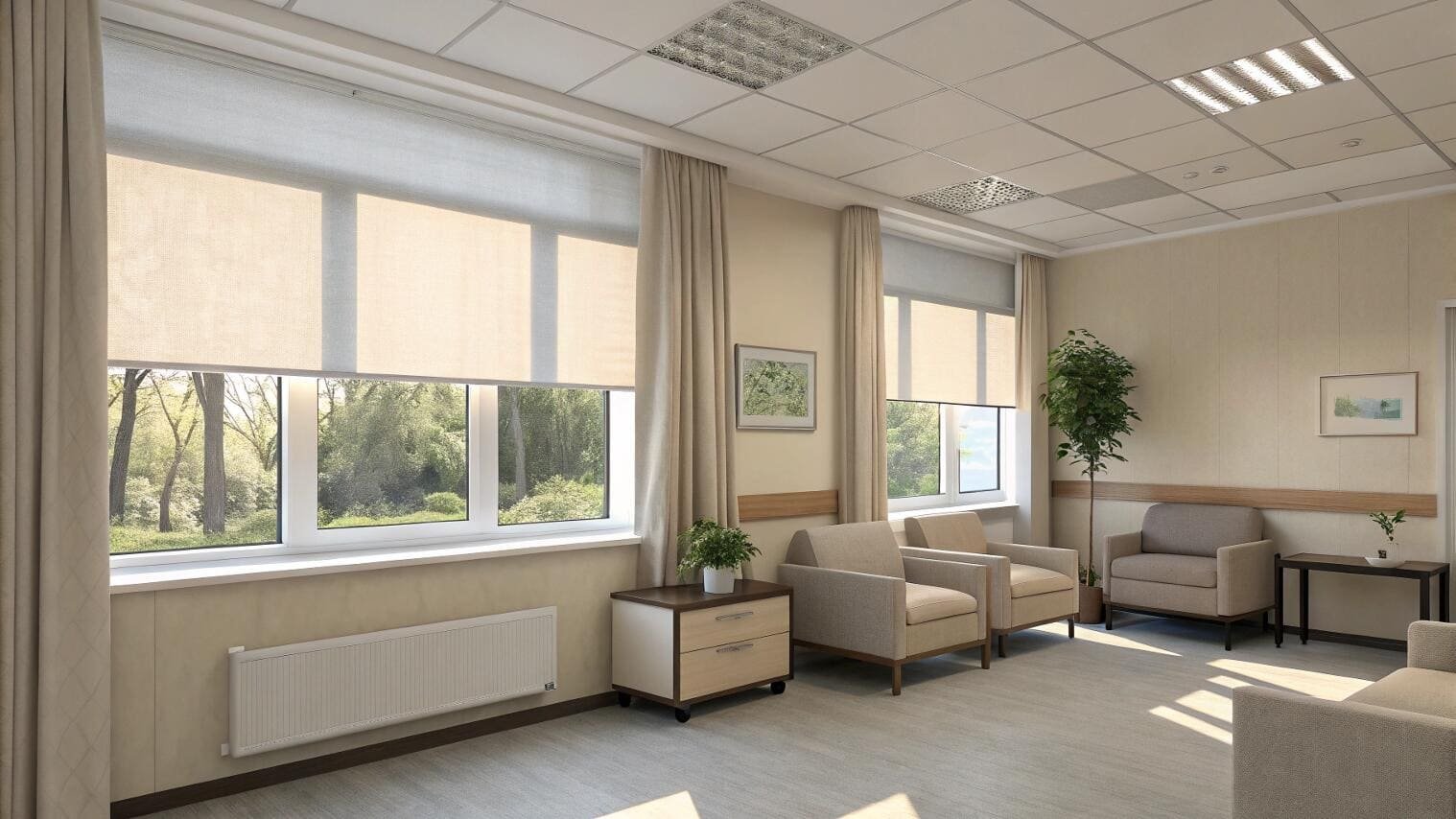
Material science fundamentals explain why certain blind types outperform others in longevity testing and real-world applications. Aluminum resists corrosion, UV degradation, and mechanical stress better than most alternatives. Quality aluminum venetian blinds maintain structural integrity and appearance throughout extended service periods while requiring only basic maintenance.
Hardware durability often determines actual service life more than visible components. Premium tilt mechanisms, reinforced mounting brackets, and quality lift systems enable blinds to function reliably throughout their design life. Budget hardware may fail within 3-5 years regardless of material condition, requiring complete replacement rather than component repair.
Longevity Analysis by Material Type:
| Material Category | Expected Lifespan | Durability Factors | Common Failure Modes |
|---|---|---|---|
| Aluminum | 15-20 years | Corrosion resistance, UV stability | Hardware wear, cord replacement |
| Quality Wood | 20-25 years | Natural durability, repairable | Moisture damage, finish wear |
| Synthetic Fabrics | 10-15 years | UV treatment, soil resistance | Fabric tears, mechanism wear |
| Natural Fabrics | 8-12 years | Aesthetic appeal | UV degradation, staining |
| PVC/Vinyl | 12-18 years | Moisture resistance | UV brittleness, color fading |
Manufacturing quality creates significant durability variations within each blind category. Premium manufacturers invest in superior materials, precision engineering, and quality control that extends product life substantially. Budget options may use thinner materials, weaker hardware, and less rigorous assembly that reduces longevity regardless of basic design advantages.
Environmental matching affects longevity outcomes significantly across different installation conditions. Blinds selected appropriately for their intended environment last longer than inappropriate choices regardless of inherent material advantages. Moisture-resistant blinds in bathrooms, UV-stable options for south-facing windows, and heavy-duty mechanisms for high-traffic areas optimize longevity through proper application matching.
What are the easiest blinds to maintain?
Maintenance ease depends on cleaning accessibility, mechanism simplicity, and resistance to common problems that require professional attention or component replacement.
Roller blinds with synthetic fabrics are easiest to maintain, requiring only periodic dusting and occasional spot cleaning. Their simple mechanism has fewer failure points, while smooth fabric surfaces clean easily without special techniques or professional service requirements.
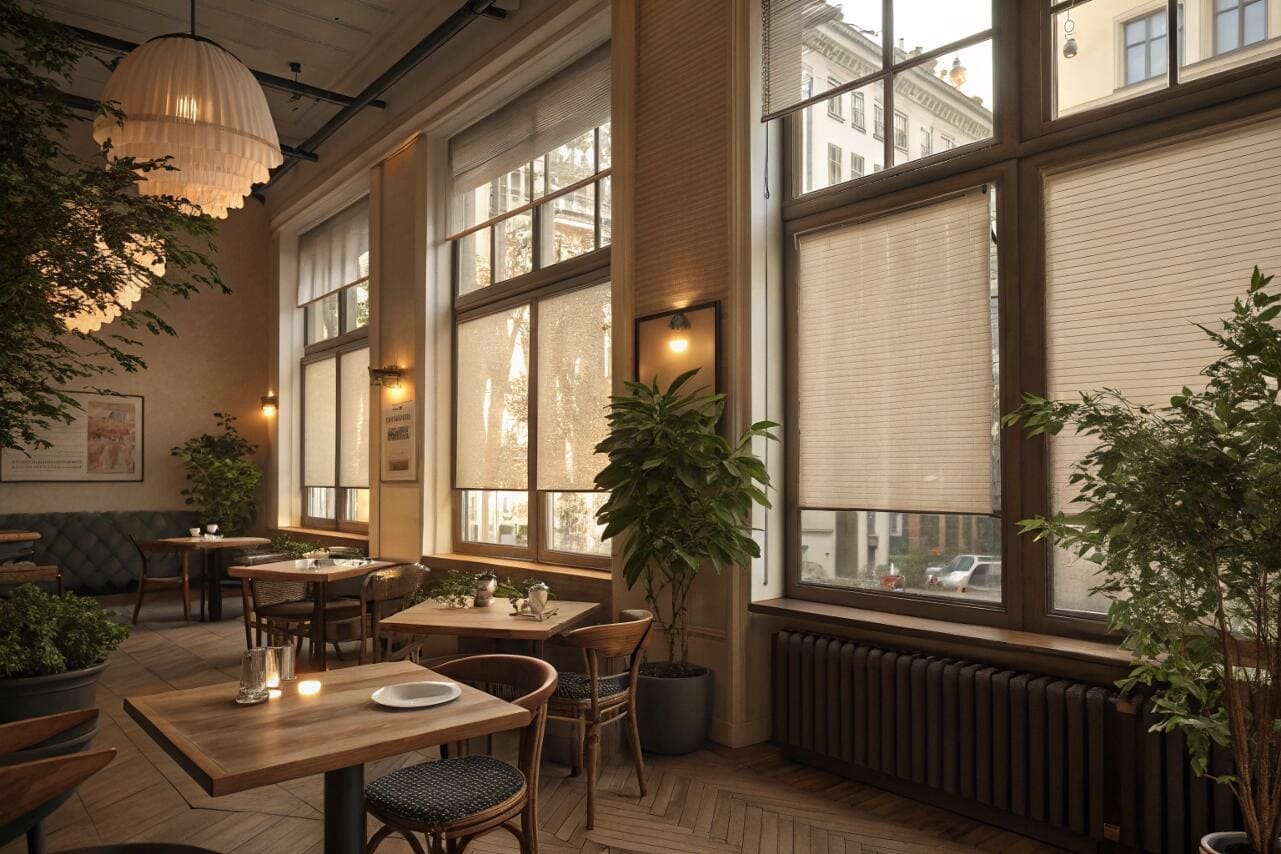
Cleaning accessibility determines daily maintenance burden more than material durability in most applications. Roller blinds present flat surfaces that clean quickly with standard methods, while venetian blinds require individual slat attention that multiplies cleaning time. Cellular blinds with internal structures may trap dust and require professional cleaning to maintain appearance and function.
Mechanism complexity directly affects maintenance requirements and potential problems. Simple roller blind mechanisms with spring or chain operation require minimal attention compared to venetian blind tilt systems with multiple moving parts. Motorized systems add electronic complexity that requires specialized knowledge for troubleshooting and repair.
Maintenance Ease Comparison:
| Blind Type | Cleaning Time | Mechanism Complexity | Professional Service Needs |
|---|---|---|---|
| Roller (Synthetic) | 5-10 minutes | Very Simple | Rarely needed |
| Aluminum Venetian | 15-30 minutes | Moderate | Occasional adjustment |
| PVC Vertical | 10-20 minutes | Simple | Slat replacement |
| Cellular/Honeycomb | Professional recommended | Complex | Regular professional service |
| Wood Venetian | 20-40 minutes | Moderate | Refinishing, repair |
| Motorized Systems | Variable | High | Regular calibration, repair |
Surface texture and material properties affect cleaning effectiveness and required frequency. Smooth synthetic materials resist soiling and clean easily with basic procedures, while textured or natural materials may trap dirt and require more aggressive cleaning methods. Understanding these characteristics helps select blinds that match available maintenance resources.
Repair accessibility influences long-term maintenance costs and service requirements. Blinds with replaceable components like individual slats or cord systems enable cost-effective repairs that extend service life. Complex integrated systems may require complete replacement when components fail, increasing total maintenance costs over the blind's lifetime.
When should you replace blinds?
Replacement timing depends on functional performance, safety considerations, aesthetic standards, and economic analysis comparing repair costs to replacement benefits.
Replace blinds when repair costs exceed 50% of replacement cost, when safety issues develop with cords or mounting hardware, or when functional performance no longer meets requirements. Aesthetic deterioration alone may justify replacement in customer-facing environments, while purely functional applications can tolerate appearance issues longer.
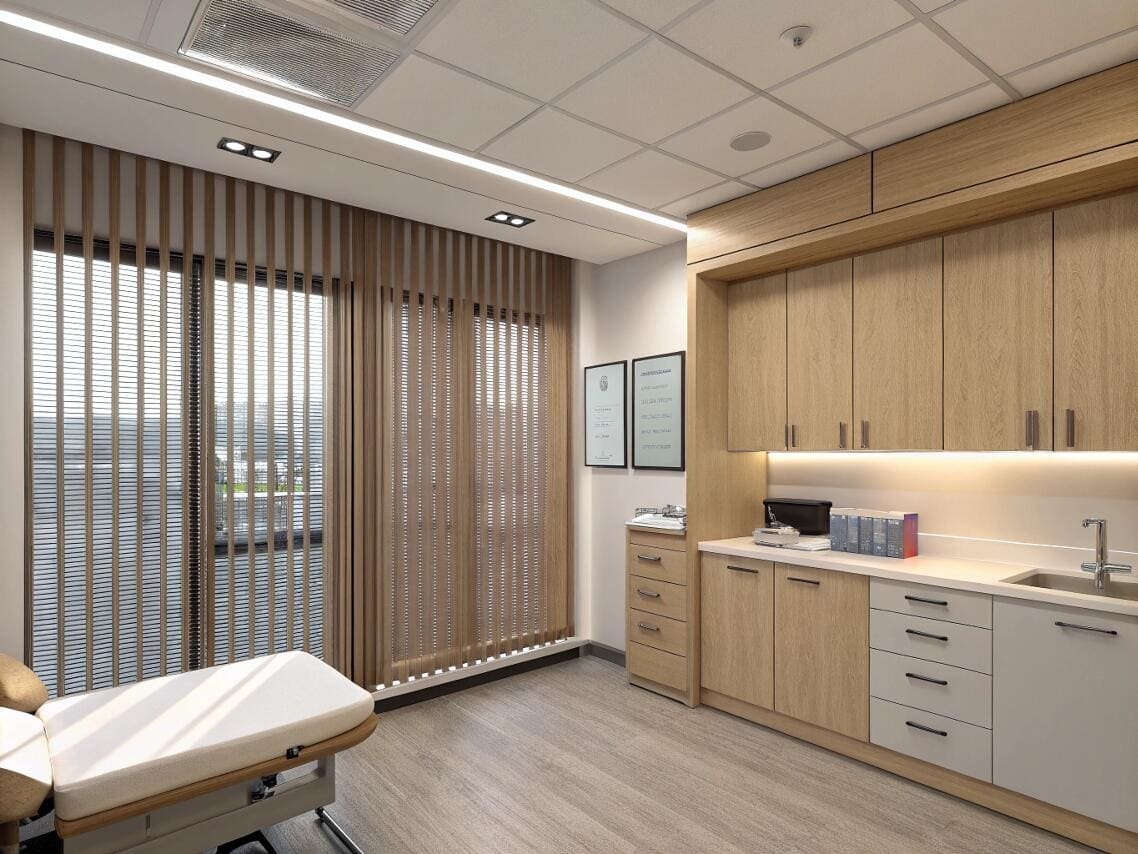
Safety considerations create non-negotiable replacement triggers that override economic calculations. Cord mechanisms that pose strangulation risks, mounting hardware showing fatigue or corrosion, and motorized systems with electrical issues require immediate replacement regardless of cost considerations. These safety issues cannot be deferred without creating liability exposure.
Functional performance degradation affects operational efficiency and may justify replacement before complete failure. Blinds that no longer provide adequate light control, privacy, or energy efficiency may warrant replacement to maintain building performance standards. Commercial environments often have stricter functional requirements than residential applications.
Replacement Decision Matrix:
| Condition Assessment | Repair Recommended | Replace Recommended | Critical Replacement |
|---|---|---|---|
| Minor wear, full function | ✓ | ||
| Moderate wear, reduced function | ✓ (if cost <50%) | ✓ (if cost >50%) | |
| Safety issues present | ✓ | ||
| Complete mechanism failure | ✓ | ||
| Aesthetic deterioration | Case by case | ✓ (customer areas) |
Economic analysis should consider not just immediate replacement costs but long-term value implications. New blinds may offer improved energy efficiency, enhanced functionality, or reduced maintenance requirements that justify replacement even when existing blinds remain marginally functional. These benefits compound over time and may offset higher initial replacement costs.
Technology advancement creates replacement opportunities that improve building performance or operational efficiency. Upgrading from manual to motorized blinds, implementing smart home integration, or installing energy-efficient materials may provide value that justifies replacement timing independent of existing blind condition.
Are professional maintenance contracts worth it for commercial blinds?
Professional maintenance contracts provide value through preventive care, expertise, and service reliability, but cost-effectiveness depends on facility size, blind complexity, and internal maintenance capabilities.
Professional maintenance contracts typically cost 5-15% of installation value annually but can extend blind lifespan by 30-50% while reducing emergency repair costs and ensuring consistent performance. The value proposition is strongest for facilities with complex motorized systems, large blind quantities, or limited internal maintenance resources.
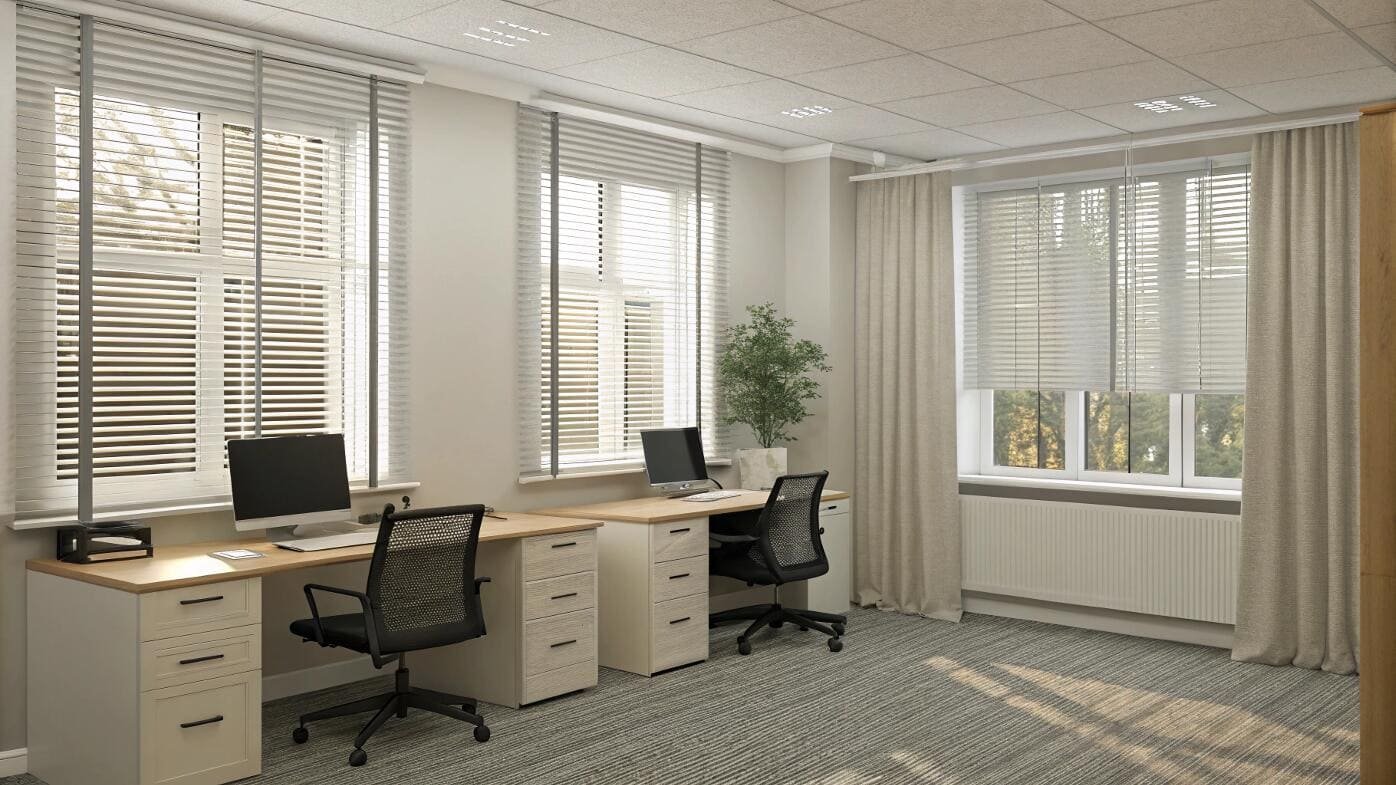
Contract economics depend significantly on facility scale and blind complexity. Large commercial installations with hundreds of blinds benefit from professional service efficiency and specialized equipment that reduces per-unit maintenance costs. Small facilities may find professional contracts expensive relative to DIY maintenance or occasional service calls when problems arise.
Preventive maintenance programs included in professional contracts prevent minor issues from becoming major failures that require costly replacements. Regular inspections identify worn components, alignment issues, and mechanical problems before they cause operational failures. This preventive approach typically costs less than reactive maintenance while ensuring consistent blind performance throughout the service period.
Expertise access represents a significant contract advantage for facilities lacking internal blind maintenance knowledge. Professional technicians understand manufacturer specifications, proper adjustment procedures, and troubleshooting techniques that prevent damage during maintenance activities. This expertise becomes particularly valuable for motorized systems requiring specialized knowledge and diagnostic equipment.
Professional Contract Value Analysis:
| Facility Type | Contract Value | Key Benefits | Alternative Approach |
|---|---|---|---|
| Large Office Complex | High | Efficiency, expertise, reliability | Dedicated maintenance staff |
| Small Commercial | Medium | Professional knowledge | Periodic service calls |
| Healthcare Facilities | Very High | Compliance, reliability | Critical for operations |
| Educational Buildings | Medium-High | Summer maintenance programs | Seasonal intensive service |
| Residential Properties | Low | Usually not cost-effective | DIY maintenance preferred |
Service reliability becomes crucial for facilities where blind functionality affects operations or comfort significantly. Professional contracts include response time guarantees, replacement part availability, and emergency service provisions that minimize downtime when problems occur. These service levels may justify contract costs even when preventive maintenance could be handled internally.
Warranty compliance requirements often mandate professional maintenance for motorized or complex blind systems. Manufacturers may void warranties if improper maintenance causes damage or if service intervals are not met. Professional contracts ensure compliance with warranty terms while providing documentation required for warranty claims when component failures occur.
What does professional blind maintenance include?
Professional blind maintenance encompasses comprehensive service programs that address cleaning, mechanical maintenance, component replacement, and performance optimization beyond basic DIY capabilities.
Professional maintenance typically includes deep cleaning with specialized equipment, mechanical component inspection and adjustment, motor calibration for automated systems, hardware lubrication, cord replacement, and detailed performance reporting. Advanced programs may include energy efficiency optimization, smart system integration updates, and compliance documentation for commercial applications.
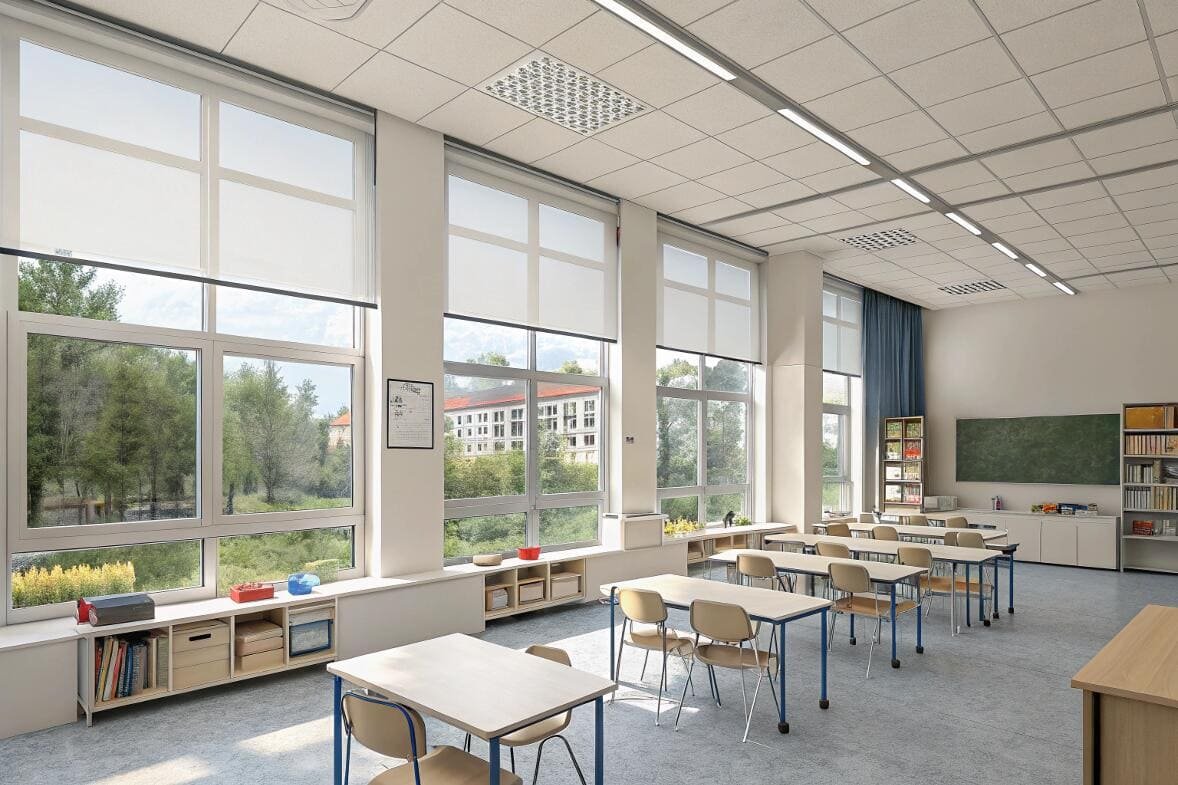
Deep cleaning services utilize professional-grade equipment and techniques not available to facility maintenance staff. Ultrasonic cleaning systems, specialized fabric treatments, and controlled drying procedures restore blind appearance while preserving material integrity. These services are particularly valuable for fabric blinds in high-traffic or contaminated environments where standard cleaning methods prove inadequate.
Mechanical system maintenance requires technical knowledge and specialized tools for proper adjustment and calibration. Professional technicians inspect tilt mechanisms, adjust belt tensions, calibrate motor limits, and verify safety systems function correctly. This technical maintenance prevents premature wear and ensures optimal performance throughout the service interval.
Comprehensive Service Components:
| Service Category | Included Services | Frequency | Special Equipment |
|---|---|---|---|
| Cleaning | Deep fabric cleaning, slat washing | Monthly/Quarterly | Ultrasonic systems, drying chambers |
| Mechanical | Component inspection, lubrication | Quarterly/Semi-annual | Precision tools, diagnostic equipment |
| Motorized Systems | Calibration, programming updates | Semi-annual/Annual | Control interfaces, programming tools |
| Repairs | Component replacement, adjustments | As needed | Manufacturer parts, specialized tools |
| Documentation | Performance reports, compliance records | Ongoing | Digital tracking systems |
Component replacement services include maintaining inventory of common wear parts like cords, chains, tilt mechanisms, and motor components. Professional services stock manufacturer-approved parts and provide installation with proper adjustment and testing. This parts availability minimizes downtime and ensures repairs maintain original performance specifications.
Performance monitoring and reporting provide valuable facility management information about blind condition, energy efficiency, and replacement planning. Professional services track blind performance over time, identify patterns that indicate upcoming maintenance needs, and provide recommendations for optimization or replacement based on actual condition data rather than arbitrary schedules.
Smart system integration updates keep motorized blinds current with evolving technology standards and building automation protocols. Professional services provide firmware updates, integration modifications, and compatibility upgrades that extend system life and maintain functionality with changing facility requirements.
Conclusion
Professional blind maintenance contracts provide clear value for complex commercial installations but may not justify costs for simple residential applications or basic commercial blinds.
Maximize Your Blind Investment with Expert Care
Don't let poor maintenance destroy your blind investment. Our professional maintenance programs extend blind lifespan, ensure reliable operation, and maintain aesthetic standards that reflect your facility's quality.
We provide comprehensive maintenance contracts tailored to your specific blind types, facility requirements, and budget constraints. Our certified technicians understand manufacturer specifications and use professional-grade equipment to deliver results that exceed DIY maintenance capabilities.
Schedule your maintenance consultation and get a customized service proposal: **info@velablinds.com
Extended FAQ Section
How much do professional blind maintenance contracts typically cost?
Professional blind maintenance contracts typically cost 5-15% of the original blind installation value annually, with pricing varying based on blind complexity, facility size, and service frequency requirements. Simple roller blind maintenance might cost $2-5 per blind annually, while complex motorized systems can cost $15-30 per blind for comprehensive service programs.
Contract pricing structures often include tiered service levels with different maintenance frequencies and service components. Basic contracts might include quarterly cleaning and annual inspections, while premium programs provide monthly service, emergency response, and comprehensive component replacement. Large facilities with hundreds of blinds typically receive volume discounts that can reduce per-unit costs by 20-40% compared to small installations.
The cost comparison should include alternative expenses like internal maintenance time, equipment purchases, and potential repair costs from improper maintenance. Facilities spending significant internal resources on blind maintenance may find professional contracts cost-competitive while providing superior results and reliability. Contract costs become particularly attractive when considering emergency repair expenses that professional preventive maintenance typically prevents through early problem identification.
What happens if blinds break during a professional maintenance contract?
Most professional maintenance contracts include repair services for normal wear items and component failures that occur during regular maintenance activities. However, coverage varies significantly between contract types, with basic agreements covering only maintenance-related issues while comprehensive contracts may include broader repair and replacement coverage.
Contract terms typically distinguish between normal wear failures covered under the agreement and damage caused by abuse, accidents, or environmental factors that may require additional charges. Professional services usually stock common replacement parts and can complete most repairs during scheduled maintenance visits, minimizing disruption and additional service calls.
Warranty coordination becomes valuable when component failures occur during contract periods. Professional service providers understand manufacturer warranty requirements and can facilitate warranty claims while providing temporary repairs or replacements to maintain facility operations. This service coordination often proves more valuable than the actual repair costs, especially for complex motorized systems with specialized components requiring manufacturer involvement.
Can professional maintenance contracts help with energy efficiency optimization?
Professional maintenance contracts increasingly include energy efficiency services as facilities focus on sustainability and operating cost reduction. These services involve adjusting blind positioning schedules, optimizing automated operation for seasonal sun angles, and maintaining peak performance of energy-efficient blind materials and coatings.
Smart system integration within maintenance contracts enables sophisticated energy management through building automation system coordination. Professional technicians can program seasonal adjustment schedules, integrate blinds with lighting controls, and optimize operation based on occupancy patterns and energy pricing structures. These optimizations often provide energy savings that partially offset maintenance contract costs.
Performance monitoring included in advanced maintenance contracts tracks energy-related metrics like solar heat gain reduction, artificial lighting requirements, and HVAC load impacts. This data helps facility managers quantify blind energy contributions and make informed decisions about system upgrades or replacements that could improve efficiency further. Professional services can recommend and implement energy optimization modifications that deliver measurable utility cost reductions throughout the contract period.
---
[^1]: Understanding the mechanical components can help you maintain your blinds effectively and prevent failures.
[^2]: Discover effective cleaning methods to keep your blinds looking new and functioning well.
[^3]: Explore the unique maintenance needs of motorized blinds to ensure their longevity.
[^4]: Understanding the factors influencing blind lifespan can help you make informed purchasing decisions.Partner with VelaBlinds for Your Next Project
Smart window treatments shouldn't be complicated. After working with 500+ distributors and contractors worldwide, I've streamlined the process to get you quality products, competitive pricing, and reliable support - every time.
Why project professionals choose VelaBlinds:
- ✅ Fast, Accurate Quotes - Detailed specs and pricing within 24 hours
- ✅ Transparent Pricing - No hidden fees, volume discounts clearly outlined
- ✅ Quality Assurance - Direct partnerships with certified OEM manufacturers
- ✅ Project Support - Dedicated account manager from quote to delivery
Start your next project:
📧 Quick Quote: Send your requirements to info@velablinds.com
📱 Direct Contact: WhatsApp +86 137 2012 8317
🌐 Browse Solutions: https://velablinds.com/
📁 Product Resources: Access spec sheets, catalogs & project files
Jimmy Chen, Founder
"I built VelaBlinds to solve the real challenges I faced as a project buyer - long lead times, unclear specs, and unreliable suppliers. Let's discuss how we can power your projects with smarter blinds."
Serving distributors and contractors across North America, Europe, and Australia since 2018.

